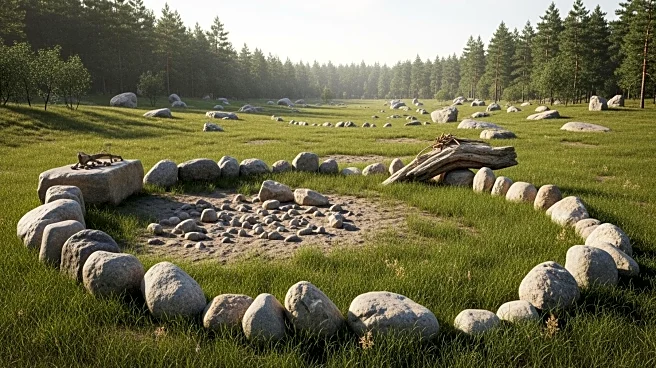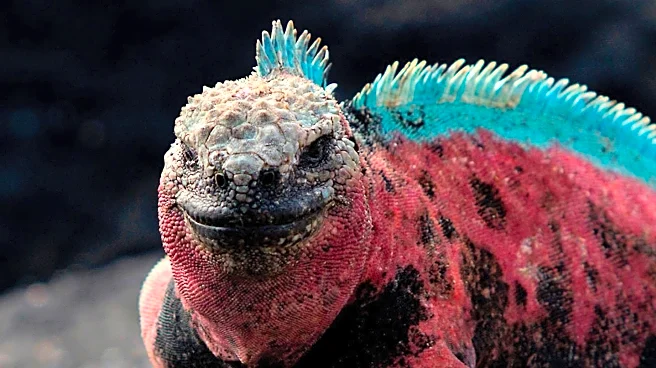What's Happening?
A recent study published in PLOS One has revealed that Neanderthals and early modern humans significantly influenced Europe's ecosystems long before the advent of agriculture. The research, conducted by
an international team of archaeologists, ecologists, and climate scientists, utilized advanced computer simulations to explore the interactions between climate, wildlife, fire, and human activity in shaping prehistoric landscapes. The study challenges the prevailing notion that early humans had minimal impact on their environment prior to farming. Led by Leiden University archaeologist Anastasia Nikulina, the team developed a model called HUMLAND to simulate human interactions with landscapes during the Last Interglacial and Early Holocene periods. The findings indicate that human activities, such as burning vegetation and hunting large herbivores, played a significant role in altering vegetation patterns and landscape openness.
Why It's Important?
The study's findings have significant implications for understanding the historical human impact on the environment. By demonstrating that early humans were active agents in shaping their surroundings, the research challenges the perception of prehistoric landscapes as untouched wildernesses. This insight is crucial for contemporary discussions on human-induced environmental changes, as it suggests that the ecological footprint of humans is a longstanding characteristic of the species. The study also highlights the importance of integrating archaeological, ecological, and computational sciences to gain a comprehensive understanding of human-environment interactions. The research underscores the need to reassess the role of early human activities in shaping ecosystems, which could inform current conservation and land management strategies.
What's Next?
The study opens avenues for further research into the ecological impacts of early human populations in other regions, such as the Americas and Australia, which lacked earlier hominin populations before the arrival of Homo sapiens. By comparing these regions, researchers can gain deeper insights into the extent of ancient human influence on natural landscapes. Additionally, the integration of artificial intelligence and genetic algorithms in archaeological research could be expanded to explore other historical periods and regions, providing a more nuanced understanding of human-environment interactions over time. These findings may also prompt a reevaluation of conservation practices, taking into account the long history of human influence on ecosystems.
Beyond the Headlines
The study's approach, which combines archaeology, ecology, and computational science, represents a novel methodology for examining prehistoric human impacts on the environment. By using a genetic algorithm to explore thousands of scenarios, the researchers were able to identify those that best matched real-world pollen data, offering a more accurate depiction of early human activities. This interdisciplinary approach not only enhances our understanding of past human-environment interactions but also sets a precedent for future research in the field. The study's findings suggest that the human ecological footprint is not solely a product of modern agriculture or industry but is an inherent aspect of human history.











